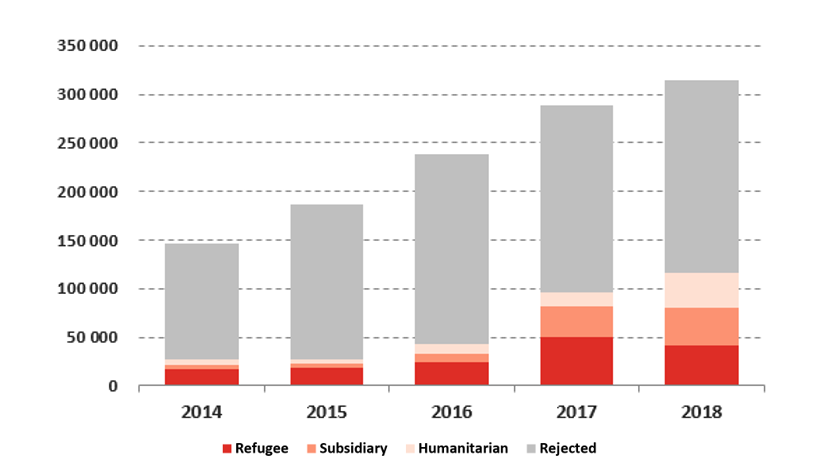Article 46 of the recast APD ensures the right to an effective remedy, but it does not prescribe harmonised standards in terms of the organisation of the appeal or the procedure to be followed. In some Member States the appeal instance examines and decides on the case de novo in fact and in law, while in others the appeal instance only decided on the legality of the decision taken by the first instance. Thus, in some Member States, the relevant second instance bodies take decisions on the merits of each application, while in others they instead order the first instance body to review its first-instance decision. Moreover, the type of decision appealed is unknown, thus it is not possible to imply in how many cases a positive final decision eventually reversed a negative decision. As a result, analyses of decisions of higher instances are extremely challenging and so results should be interpreted with care.
|
Final decisions issued in appeal or review in the EU+, 2014-2018 |
 |
|
Figure 19: In 2018, more decisions were issued at second or higher instances than in 2017, |
In 2018, EU+ countries issued 314 915 decisions at second or higher instance, a 9 % increase compared to 2017 (Figure 19). Thus, a trend of progressively more final decisions issued each year, which has been observed as of 2014, persisted. Moreover, in 2018 a higher share of final decisions granted some form of protection: the recognition rate for decisions issued at final instance was indeed 37 %, up from 33 % in 2017. In 2018 the EU+ recognition rate at higher instances was therefore just two percentage points lower than that at first instance. In terms of outcome of decisions, slightly more positive (final) decisions granted refugee status (36 % of all positive decisions) than subsidiary (33 %) or humanitarian protection (31 %).

